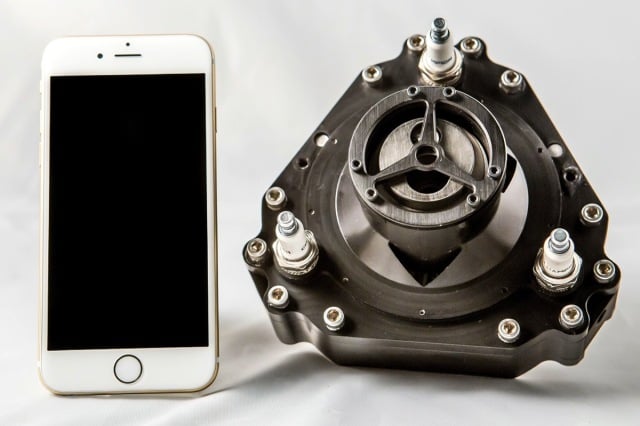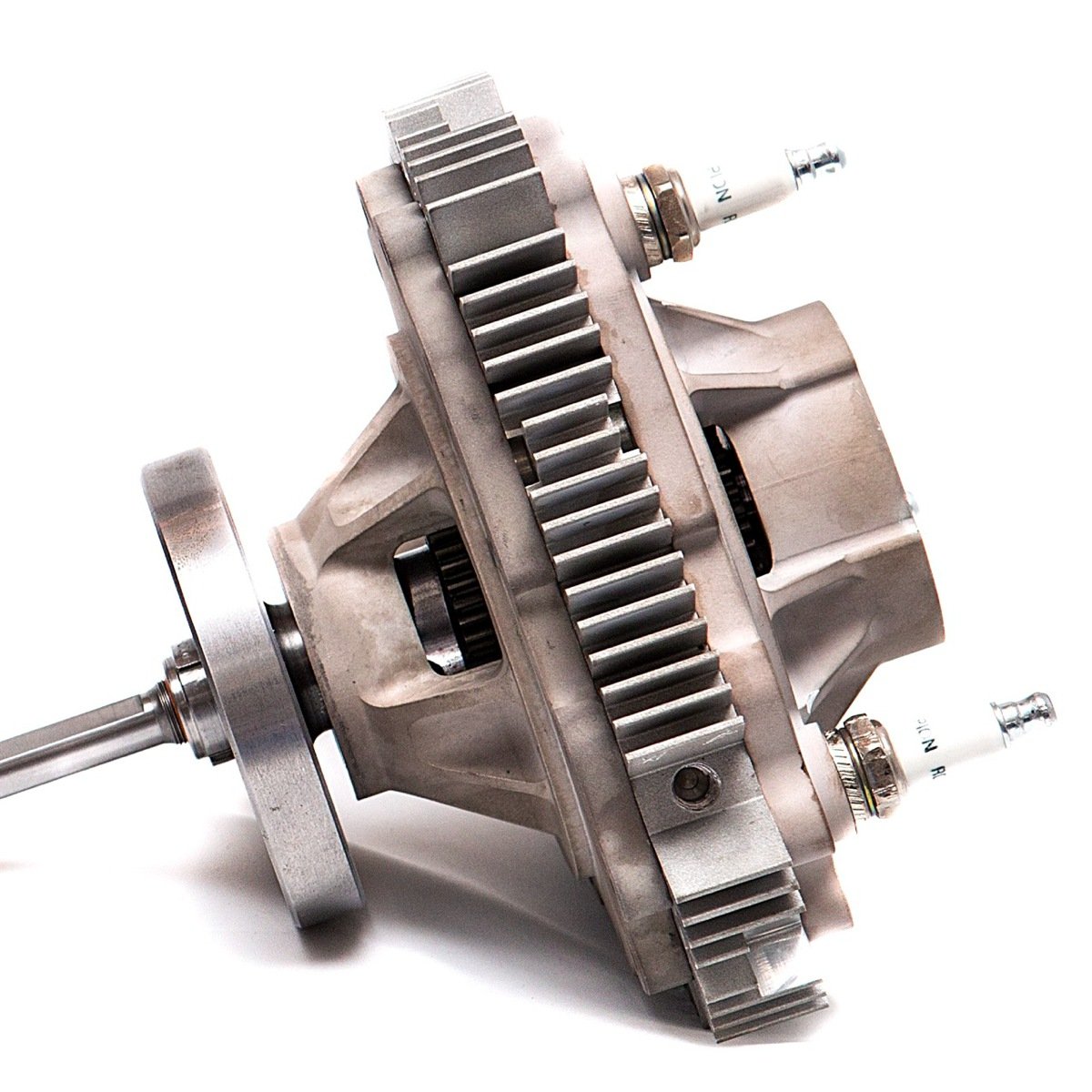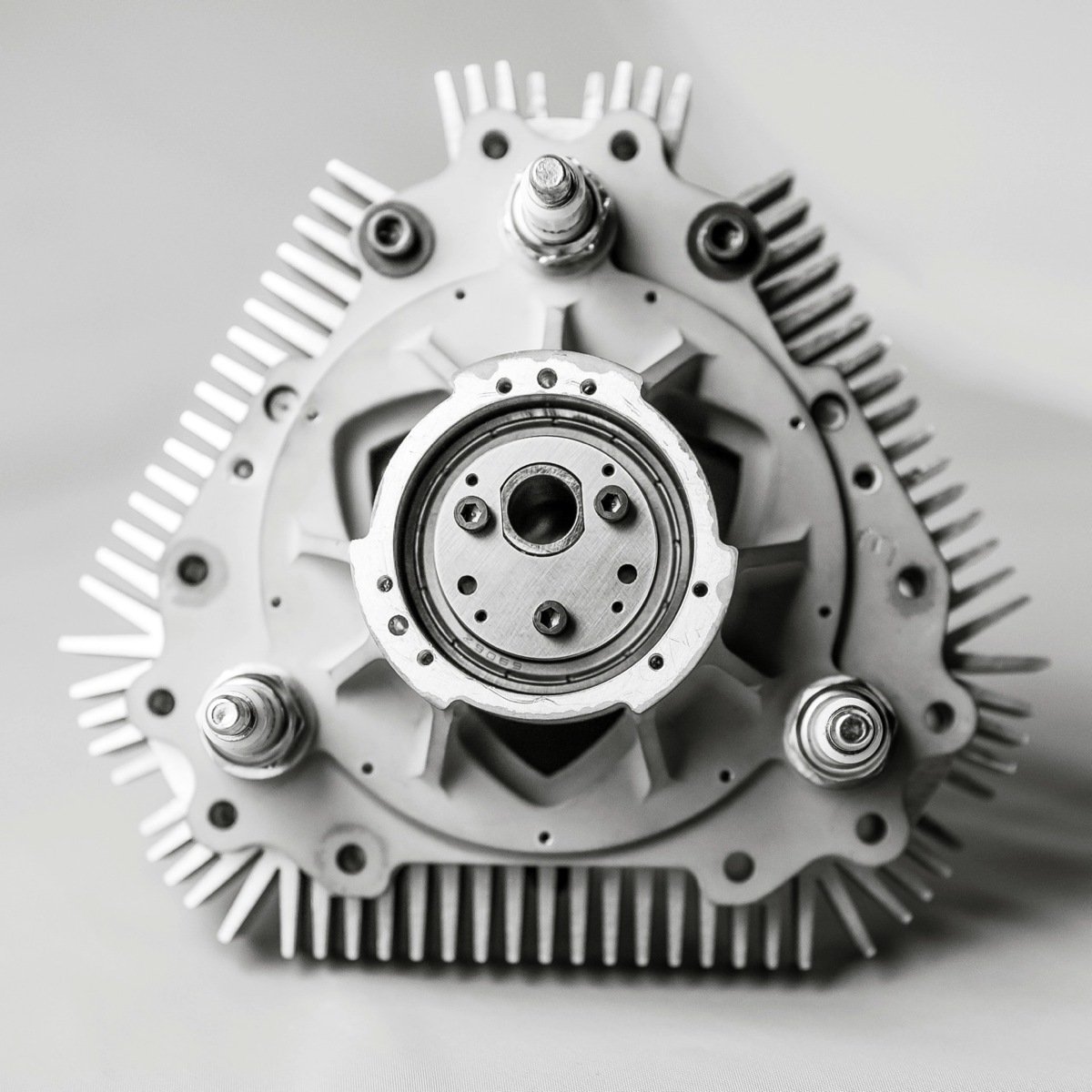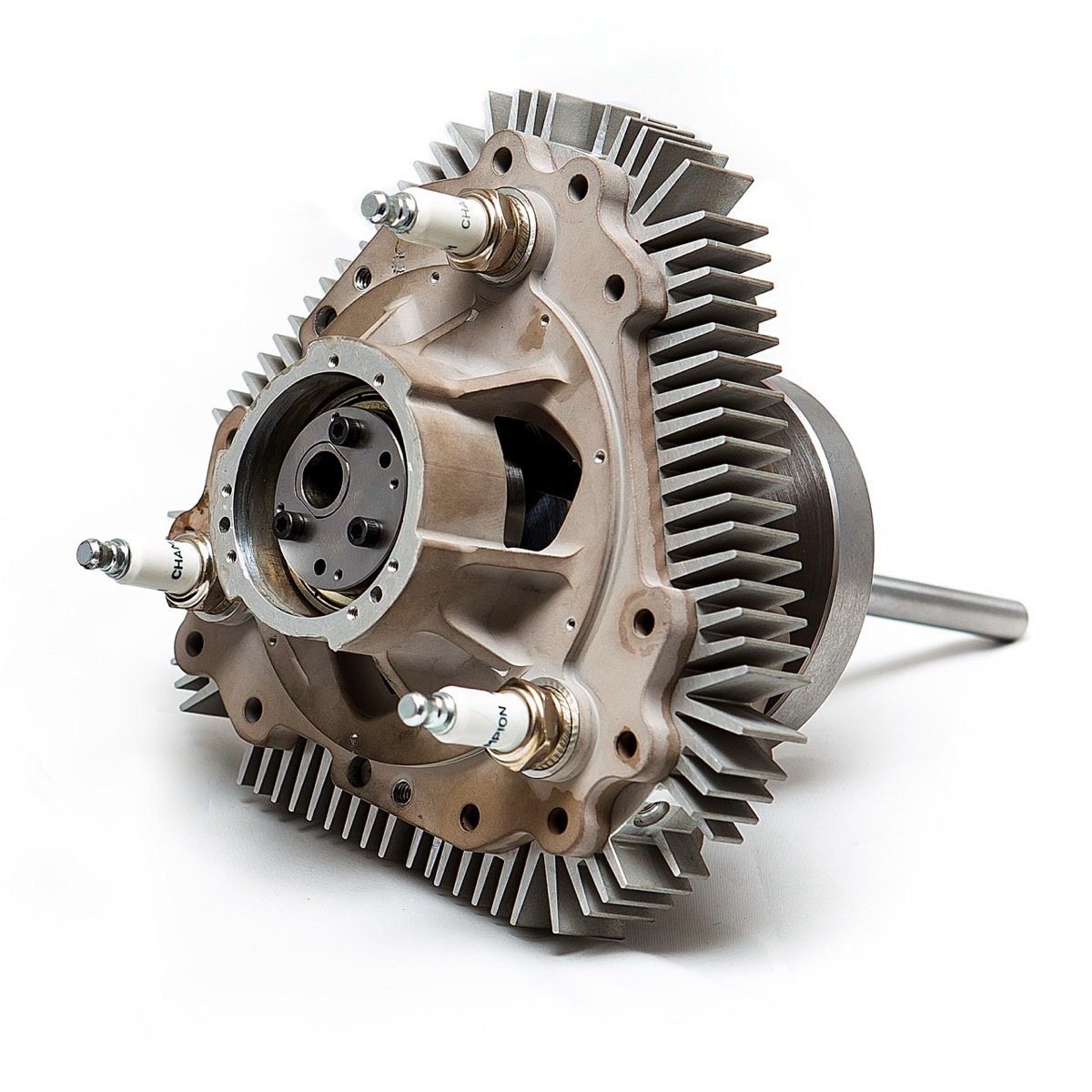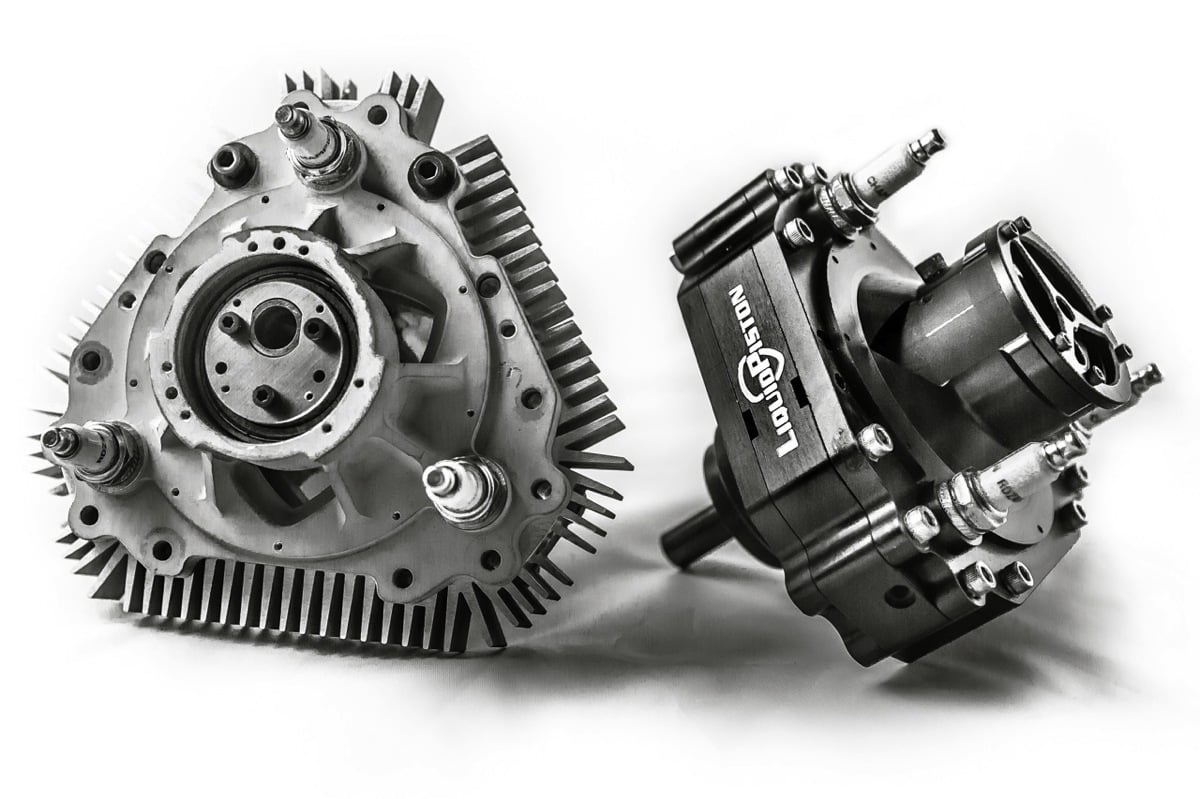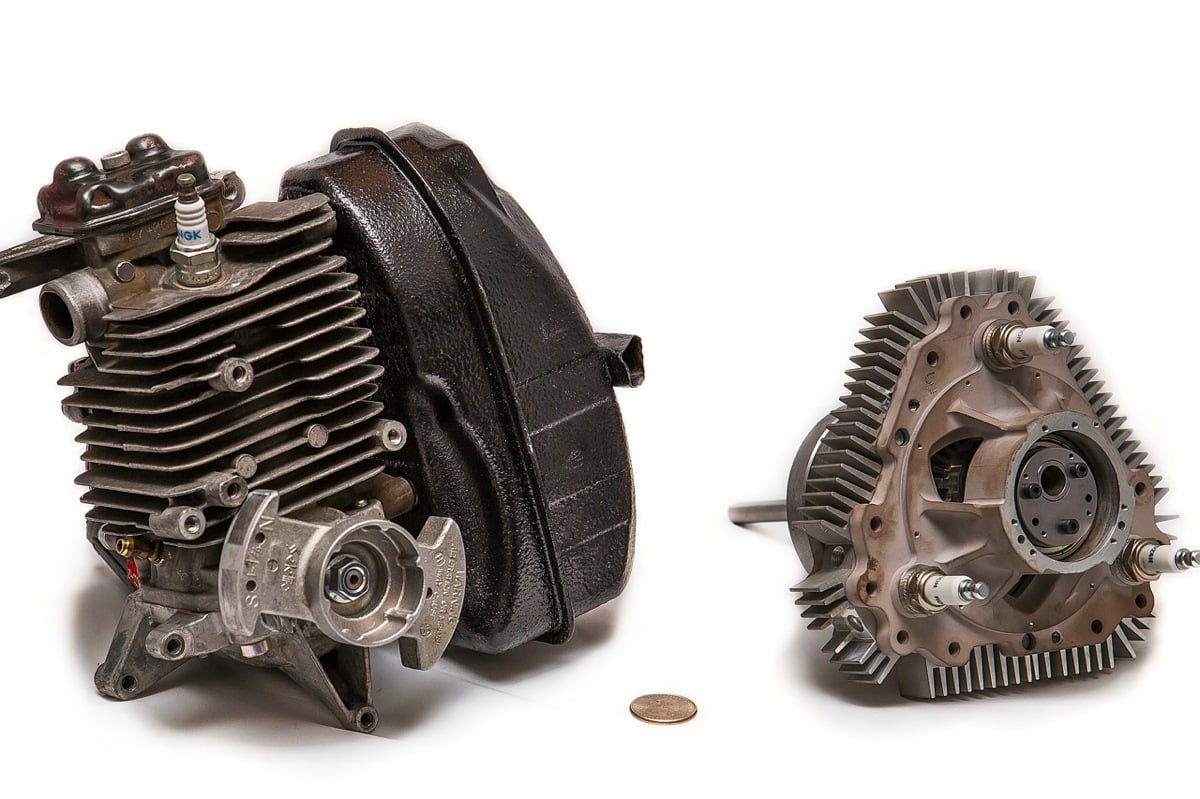A new 70cc rotary 4-stroke engine that’s a little bigger than an iPhone yet could pump out five horsepower was unveiled by LiquidPiston [2] at last week’s SAE International/JSAE 2014 Small Engine Technology Conference in Italy.
Called the X Mini, the compact, power-dense engine has only two moving parts. An early prototype weighing four pounds produced 3.5 horsepower at 10,000 rpm. Liquid Piston says that when fully developed, the engine could spin 15,000 rpm and make more than five horsepower while weighing only three pounds.
The X Mini is based on LiquidPiston’s patented thermodynamic cycle and engine architecture. Previous larger displacement engines from the company made 70 and 40 horsepower. The X Mini was used to demonstrate that the High Efficiency Hybrid Cycle (HEHC) engine can scale down in size to meet additional markets, such as lawn and garden equipment, small motorcycles, robotics, range extenders for hybrids, auxiliary power units and even unmanned aerial vehicles.
“The X Mini is an incredible breakthrough, and we expect to further optimize the engine for increased power (greater than 5 horsepower) and efficiency, and even lower operational noise,” says Dr. Alexander Shkolnik, president and co-founder of LiquidPiston.
The HEHC technology is said to optimize fuel efficiency by combining the best features of four current automotive engine cycles: high compression ratio in diesel; constant volume combustion in Otto; over-expansion to atmospheric pressure in Atkinson; and internal cooling with air or water in Rankine.
LiquidPiston adapted this new cycle to rotary architecture because there’s flexibility in optimizing each part of the cycle. It’s similar to a Wankel or rotary engine with three separate combustion chambers to create three power strokes per revolution. But LiquidPiston stresses that the engine doesn’t operate the same way. Watch the video below to learn more.
